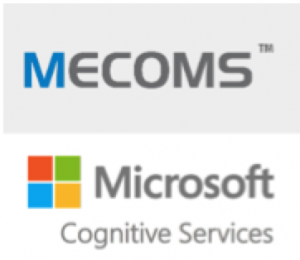 Since the launch of Microsoft’s Bot Framework at the Build 2016 conference in March 2016, Opus Research been on the look-out for deployments among large enterprises. With the introduction of MIA, short for “MECOMS Interactive Agent”, we can finally say “Eureka!”
Since the launch of Microsoft’s Bot Framework at the Build 2016 conference in March 2016, Opus Research been on the look-out for deployments among large enterprises. With the introduction of MIA, short for “MECOMS Interactive Agent”, we can finally say “Eureka!”
MECOMS is a subsidiary of Belgian IT and system integrator Ferranti Computer Systems. It was launched in 2005 to support implementations of the Microsoft Dynamics AX suite of business process management software to support “smart metering” and customer care. Based on 10 years of experience, its management recognized and can document the potential for Enterprise Intelligent Assistance in the utility domain, resulting in MIA.
Utility customers communicate with “MIA_agent” through Web-based chat or as a private message on Facebook Messenger or Slack. It is a cloud-based offering that resides in Microsoft Azure and its ability to understand and respond to questions or instructions in a conversational manner is powered by Microsoft’s LUIS (Language Understanding Intelligence Service) and Text Analytics APIs. The latter is key to supporting sentiment analysis as well as “key phrase” spotting.
Through ongoing research of Enterprise Intelligent Assistants, Opus Research, has data from solution providers that account for nearly 2,800 implementations worldwide, involving over 1,200 enterprises. Utilities have proven to be early adopters of Intelligent Assistant technologies. They have been fast-learners as well as evidenced by this presentation from Greg Stanway, Manager of Customer Strategy & Projects at Canada’s BC Hydro.
Utilities have learned that over 80% of the customer contacts or touchpoints involve only five topic areas or “intents.” People get in touch to initiate service, to question a billing amount, learn of new service options, arrange payment or report an outage. Three out of five of these instances tend to be cyclical (query volumes vary with billing cycles) or “spikey” (lots of calls arrive during service outages). There is a very good chance that customer service agents or other resources are inundated at a particular time of the month or when a storm knocks out service.
Contacts with humans can cost a company anywhere from $6-15 dollars depending on the salary of the professional involved and the duration of a call. Automated handling of customer support activities costs pennies, so utilities have tremendous financial incentive to gear up and offer services through a virtual, intelligent assistant. With thousands of calls per week coming into a utility’s contact center, it is easy to build the business case for an automated Intelligent Assistant that has the potential to handle such a large percentage of calls while, at the same time, provide higher levels of customer satisfaction.
MECOMS launched a proof-of-concept for the Microsoft-based MIA with a large European utility April 2016. It was successfully concluded in December, setting the stage for implementation at scale later this year. With customer care becoming predominantly online and digital, the stage is set for broader, deeper and more varied IA offerings among utilities around the world.
Categories: Conversational Intelligence, Intelligent Assistants

 Getting It Right: What AI Agents Actually Mean for Customer Support (Webinar)
Getting It Right: What AI Agents Actually Mean for Customer Support (Webinar)  Beyond the Basics: How AI Is Transforming B2B Sales at TP
Beyond the Basics: How AI Is Transforming B2B Sales at TP  Five9 Launches Agentic CX: Toward AI Agents That Reason and Act
Five9 Launches Agentic CX: Toward AI Agents That Reason and Act  2025 Conversational AI Intelliview: Decision-Makers Guide to Self-Service & Enterprise Intelligent Assistants
2025 Conversational AI Intelliview: Decision-Makers Guide to Self-Service & Enterprise Intelligent Assistants